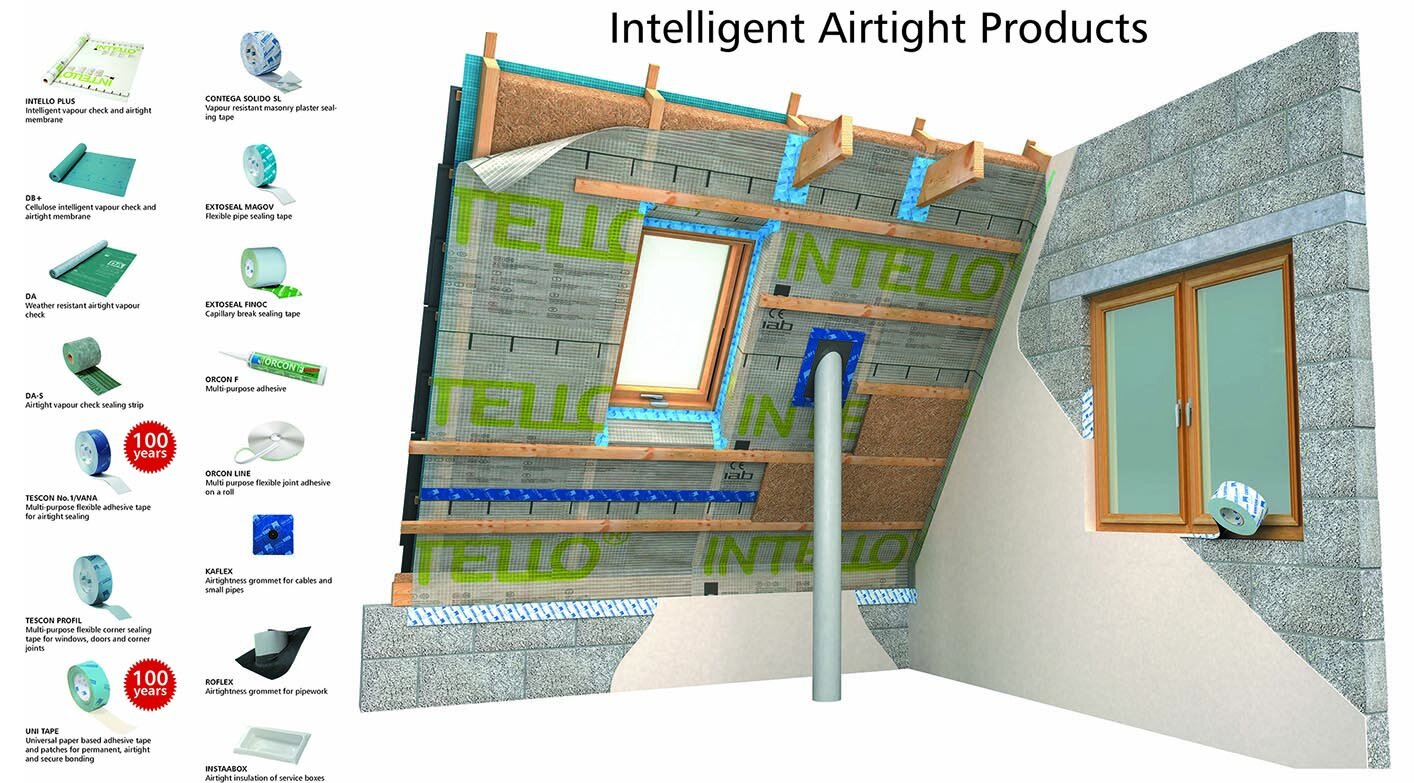PassivHaus - 10 Design Strategies
Designing to the Passivhaus standard can at times seem quite daunting and intimidating. Understanding the basic principles of the strategy is key, to ensure that you can develop your design to meet the standard without being succumbing to abortive work. This article outlines 10 broad design strategies to follow that will enable you to create a solid foundation from which your design can be developed, increasing your chances of meeting the required Passivhaus Standard.
01 Compact Building Massing
Keeping the surface area of your building to a minimum means that you will minimise heat loss, reducing energy consumption associated with space heating. This is known as the Form Factor; the ratio of surface area to internal floor area. The lower the Factor Factor, the more thermally efficient your building will be. The key point here, is to ensure that the thermal envelope is minimised. Simple vernacular forms work best. This does not mean that you have to sacrifice architectural expression however, as this can be articulated via other means out-with the thermal envelope.
02 Location of Unheated Spaces
Co-locate unheated spaces such as stores, bin stores, bike stores. Better yet, separate them from the thermal envelope altogether. This way they do not act as a heat sink, drawing energy from the heated building and complicating your Form Factor. Draw your thermal line and airtightness line around the building at an early stage to manage strategy and detailing, and continue to do so throughout the design process.
03 Optimise solar gain in the Winter through Orientation
In the northern hemisphere, prioritise dual aspect, south facing facades to optimise solar gain during the winter months. Anything beyond +/- 30 degrees is no longer considered a south facing façade by the PassivHaus Planning Package (PHPP). Optimise fenestration and living patterns to take advantage of the path of the sun throughout the day. Avoid overshadowing from neighbouring buildings and vegetation. Consider species of vegetation as well as location. Deciduous trees provide welcome shade in the Summer, whilst allowing solar gain from low angle sun in the Winter.
04 Design Glazing to balance heat gain, heat loss and daylight
Optimise your window design to consider orientation, daylight and summer comfort. Poorly located, excessively large windows are the biggest cause of summer overheating and excessive heat loss in winter months. On East/ West orientations, vertical solar shading devices are best, to the South horizontal solar shading devices should be used to control solar heat gain in the summer months. Minimise heat loss to the north by having smaller windows, whilst taking advantage of solar heat gains via larger windows to the south orientation. Designed in tandem with appropriate solar shading, this strategy will go a long way to minimise the energy requirement of the building.
05 Detailing of Windows
Optimise glazing to frame ratios to increase the thermal performance of the window by reducing the number of mullions and transoms. Triple glazing is almost mandatory in the northern hemisphere to achieve the required U-value standards, so budget accordingly. Windows should be located within the thermal line of the façade to minimise cold bridging and optimise detailing.
06 Natural Ventilation
Try to design dual aspect rooms and homes allowing rooms to benefit from natural cross ventilation. Also, consider night time purge ventilation strategies, particularly in bedroom spaces located on upper storeys. This improves indoor air quality and well-being by optimising user control over their environment.
07 Mechanical Ventilation with Heat Recovery (MVHR)
The core plant in any Passivhaus, a suitably designed and installed MVHR system is fundamental to the successful operation of the building.
MVHR units provide background ventilation by extracting moist warm air from kitchens and bathrooms, exchanging the heat to incoming cold fresh air, and then supplying the air to the other rooms in the home. The MVHR unit should be located in a suitably soundproofed room, not more than 2m from the façade. Design of ductwork and distribution is very important to ensure optimal efficiency of the system. Designed correctly and in tandem with a highly insulated fabric, the MVHR system can be sufficient to provide the entire space heating requirement for the home, whilst ensuring a high indoor air quality.
08 Fabric First
The Passivhaus standard requires a highly thermally efficient envelope. It is not prescriptive in how this is met however, allowing designers to consider a multitude of technical options to achieve the desired operational standards. Accepted ranges of thermal performance to aim for are as follows;
Ground Floor - 0.08 to 0.10W/m2k
Walls - 0.13 to 0.15W/m2k
Roofs - 0.10 to 0.12W/m2k
Windows - 0.80 W/m2k
External Doors - 1.0 W/m2k
These are stringent requirements and how you intend to achieve these should be carefully considered against design and budget constraints. Aligned with this strategy is controlling thermal bridging interfaces in the design of the external fabric. Once again, use your 'thermal line' to identify key interfaces that require attention in design to minimise the effects of thermal bridging.
09 Airtightness
Ensuring an airtight building envelope will drive improvements in construction, reduce energy demand caused by air infiltration and draughts, and protect the fabric of your building from premature decay. There are several ways of creating an airtight building, from application of airtight membranes and tapes, to high performance lining boards. The key design strategy is to draw an 'airtight line' on plan and in section around the façade, then focus and manage interface details between different systems and penetrations appropriately. This must be undertaken at an early stage in the design process and followed rigorously through each stage to construction of the building. Achieving an air change rate of 0.6 ACH is required to meet the Passivhaus standard and to ensure optimisation of the MVHR system. This is a rigorous level, when compared to current building regulation requirement of 7.0 ACH.
10 Renewables - getting to net zero carbon
By designing the building to meet the Passivhaus standard, you have taken a significant step towards achieving a net zero carbon building. This is because the building envelope is already so energy efficient that only very low levels of space heating are required. Following a Fabric First approach to achieve the Passivhaus Standard leaves only two more strategic steps to achieve Net Zero Carbon;
Addressing Domestic hot water demand via solar thermal and/ or heat pump.
Addressing electrical demand via implementation of a Photovoltaic array.
Following these 10 simple broad steps will ensure that you stand the best chance of achieving the Passivhaus Standard. You might even get to a Net Zero Carbon home, thus helping in the country's drive towards meeting our 2035 Net Zero Carbon energy targets. At the very least, if you implement some of the strategies, you will have a building or home that is far more energy efficient than the majority of buildings under construction today. All that is required is the implementation of a few simple steps. At Novo, we are happy to assist clients in whatever capacity they require to develop the strategies required to realise an energy efficient building. Please reach out to us by clicking on the button below if you feel we could be of help.
credit: Wain Morehead Architects





